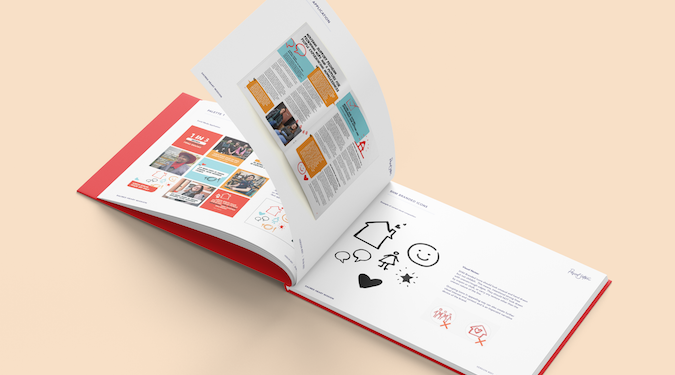Is it time that design thinking got a rebrand of its own?
Share

We’ve gotten to the point where for many businesses, ‘design thinking’ is another one of those management fads. Paris Young looks at how interpretation of design may have ventured down the wrong path.
Instead of it being recognised as a truly unique and powerful methodology, design thinking has become pigeon-holed as a singular exercise or program undertaken by businesses looking to solve a problem.
But, design thinking workshops or ad-hoc projects are not the silver bullet that rid your business of all its nasty monsters. Businesses are ever evolving ecosystems made up of people, products, services, customers, partners. And these businesses know that problems – whether they be internally, or externally influenced (hi-ya covid) – are always going to arise.
What is design thinking?
Design thinking is a non-linear methodology that teams use to better understand users, challenge assumptions, redefine problems, identify opportunities and drive innovation.
It empowers companies to test their ideas, identify previously unseen opportunities. It looks at recognising failure, and how to ‘fail-faster’. This leads to having a better grasp of how consumers interact with products or services.
It can, if integrated correctly, make a business more agile.
What can it do for a business?
When used properly it not only helps you solve problems, it can enable organisations to develop a minimum viable product (MVP). This will then lead to getting it into the hands and hearts of the ideal customer. It can also assist in solving systemic and complex problems affecting your business.
Surely something so powerful should be accessible for all types of organisations where people are involved?
Design thinking’s popularity grew as the world went into warp-speed driven by the rise of the internet. Corporate businesses were becoming indoctrinated in analytical thinking and ‘managing’ value. These businesses were becoming redundant because they lacked the ability to be creative. Those that had weathered wars and dominated markets for decades were being disrupted by new players that put user empathy and creativity at the core of their business models.
The difference between using to effectively and ineffectively
Many corporate businesses adopted something that wasn’t too far from what they already knew. A defined process that would seemingly and magically turn their teams into creative problem solvers.
However, over time, design thinking has fallen into that same trap. It has been stripped back to a program only used in crisis. And, if I’m being brutal, its brand today could be described as a linear, oversimplified commodity traded by agencies, consultants and management teams.
What next for design thinking?
So what do we do when something no longer reflects itself, or its need in the market effectively? Rebrand, baby!
In my opinion, design in general needs to start transcending the aesthetic. It needs to be recognised for more than making things pretty, and instead as a valuable tool in ‘designing’ success. Branding and design should be sitting alongside customer experience, brand and technology. It should be a non-negotiable for organisations that want to succeed in the modern day.
Design thinking needs to be the gateway to that evolution, because it is already widely adopted in terms of its value. We just need to reposition it from ‘effective problem solving process’ to ‘methodology that fuels innovation, agility and adaptability’.
If we can do that effectively, then we’ll be well on our way to a fundamental cultural shift in the way all industries create, innovate and do business. After all, we’re all craving the excitement and potential that comes from new ideas. Design thinking gives us the power to make that happen.
Instead of a ‘one and done’ approach, design thinking needs to become entrenched as an ideology. Just like design is the balance between function and form, design thinking is the balance between ideology and process. And to date, at least in my opinion, it’s become way too weighted towards the latter.
Paris Young is the founder of Pascal Satori.















